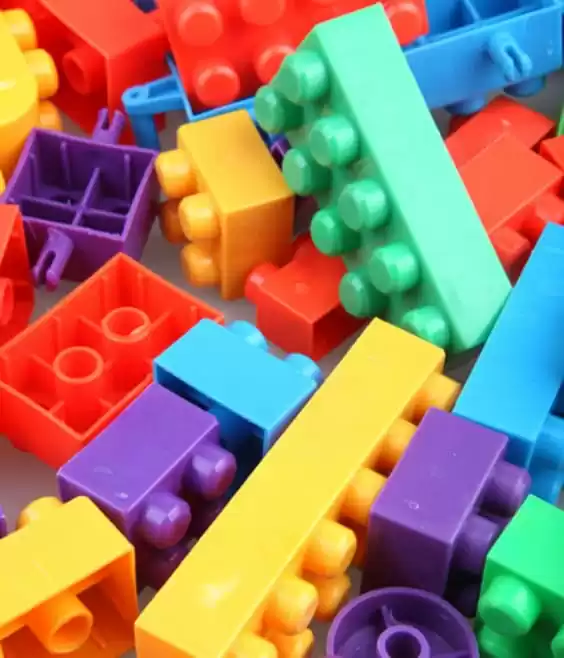Introduction
In the intricate tapestry of contemporary plastic molded parts fabrication, injection molding emerges as a pivotal technique, intricately woven into the fabric of plastic component production.
Esteemed for its alacrity and adaptability, this method has ascended as the primary choice for the mass creation of plastic injection molded parts and elements.
It transcends mere plastic shaping into functional and elaborate shapes; it embodies the epitome of precision and consistency, the very emblems of this widely embraced manufacturing paradigm.
Yet, within the intricate dominion of injection molding, a singular element frequently becomes the linchpin in the marketplace triumph of a product: chromatic uniformity.
The imperative of sustaining a homogenous hue across innumerable pieces is paramount, particularly in the realm of premium plastic merchandise.

Hue is far from a mere superficial attribute; it embodies brand essence, guarantees consumer contentment, and often adheres to exacting sector norms.
From the vivid tints for consumer products and the exacting chromatic matches for automotive parts, to the nuanced tones for electronic apparatus, the quest to consistently achieve color consistency and uphold the precise tint throughout the fabrication cycle of injection molded parts poses a formidable challenge.
This conundrum is intensified in scenarios of immense volume production, where even minor chromatic deviations can spawn evident discrepancies.
In such contexts, the ability to ensure each injection molded component materializes with the precise intended colored pigment stands as a testament to the scrupulous nature of the manufacturing sequence.
Conversely, in limited volume production, where the benefits of large-scale economics are less lenient, the endeavor for chromatic uniformity must strike a balance between precision and feasibility.
Thus, mastering the craft of chromatic consistency in injection molding transcends aesthetic concerns; it’s an affirmation of quality, brand fidelity, and consumer confidence.
It represents a complex fusion of scientific knowledge, engineering prowess, and artistic flair – an orchestration of variables that must be exquisitely synchronized to yield the ideal coloration in each instance.
II.Understanding Color in Injection Molding processing
In the sphere of plastic injection molding, the craft of imbuing plastic components with color straddles the line between exact science and artistic ingenuity.
This procedure initiates by incorporating either colored pigments or bespoke hues into the plastic substrate prior to, or concurrent with, the molding process.
These colorants, typically presented as powders or liquids, are meticulously amalgamated with the base plastic material – frequently uncolored plastic granules – to achieve the intended chromatic effect.
Diverse methodologies exist for integrating these hues into the plastic:
Masterbatch:
Predominantly utilized, this technique involves blending concentrated color pigment with plastic pellets. The concoction is subsequently introduced into the injection molding apparatus, where it undergoes heating and injection into the very high volume injection molding part.
Compounded Colors:
Here, the tint and plastic matter are premixed and compounded antecedent to the injection molding stage, ensuring more homogeneous and consistent color and distribution. This approach is particularly favored for tailor-made color specifications.

Liquid Colorants:
An avant-garde strategy, this involves the direct addition of liquid color to the plastic during its melting phase in the injection molding machine, permitting finer control over the chromatic intensity.
Each modality presents its own merits in terms of color fidelity, cost efficiency, and adaptability to varying production scales.
2: The Conundrums of Bespoke Colors
Custom colors, while facilitating brand distinction and product customization, also introduce unique challenges, particularly in maintaining chromatic consistency. The complexities differ markedly between low and very high volumes and production volumes:
Low Volume Production:
Slight Color Variations: In limited production runs, minor chromatic deviations become more conspicuous and pose greater rectification challenges. Smaller batches exacerbate the difficulty in preserving exact shades consistent colors, as trivial alterations in the mix ratio or material attributes can yield significant color disparities. Might face slight color alterations between production batches.
Economic Constraints: Realizing a distinct custom shade in modest volumes often incurs economic inefficiencies due to the minimum order requirements for specific colorants and the setup costs for a brief production cycle.
High Volume Production:
Uniformity Across Batches: In mass production scenarios, guaranteeing consistent coloration in every batch is arduous. Fluctuations in raw material lots, environmental conditions, and minor process deviations can engender color inconsistencies. It’s better to purchase compound custom material or custom material and color. Advantages, Custom color can be achieved, Fair color consistency. Disadvantages, Only suitable for high volume.
Color Stability Over Duration: For extensive production runs, maintaining color steadfastness over prolonged periods is imperative, yet challenging, as variances in raw material batches can subtly influence the eventual hue.
In both contexts, manufacturers must meticulously orchestrate the entire sequence, from raw material procurement to the ultimate production phases, to ensure that the final product conforms to the envisaged aesthetic standards.
This necessitates profound comprehension of the materials, precise command over the manufacturing protocol, and stringent quality oversight.
III.Key Factors Affecting Color Consistency
In the realm of injection molding, the pursuit of uniform chromaticity is intimately linked to the constituents employed. The inherent variability in these substances plays a pivotal role in dictating the ultimate chromatic spectrum of the artifact, hence demanding astute oversight.
Diversity in Constituent Materials:
Divergent aggregations of base materials, encompassing both plastic polymers and chromatic agents, exhibit minor yet impactful compositional discrepancies. Such divergences, albeit slight, can precipitate discernible chromatic deviations.

For example, a cluster of natural or pigment-free plastic granules may display nuanced variances in shade or translucence, influencing the eventual chromaticity post pigment infusion.
Availability of Constituent Materials:
The accessibility of particular substances and colorants bears significance on chromatic uniformity. Occasional supply chain disruptions may compel manufacturers to alternate their source providers, inducing subtle shifts in material traits.
The procurement of specific hues, particularly those necessitating rare or bespoke ingredients, presents its own set of challenges.
Bespoke Chromatic Formulation:
In the composition of unique hues, the intrinsic chroma of the base materials necessitates consideration. The foundational color of the plastic medium can modify the visual impact of the added pigments, necessitating recalibrations in the colorization procedure to achieve the intended shade.
2: Environmental Determinants
The physical milieu of the injection molding process holds significant sway over chromatic consistency. Pristine raw materials notwithstanding, environmental elements during the molding operation can engender chromatic discrepancies.
Mold Temperature:
The thermal state of the mold directly influences the distribution of the colorant within the plastic. Thermal extremes, either excessive or deficient, can result in chromatic unevenness or shade variations across different segments of the product.
Injection Pressure:
The force exerted when injecting the molten plastic into the mold also plays a role in chromatic homogeneity. Fluctuating injection pressures can create zones of varying density within the material, manifesting as patches of divergent chromatic intensity.
Other Processing Variables:
Additional aspects such as injection velocity, cooling duration, and the incorporation of additives can likewise affect the final chroma. Certain additives may interact with the colorants, altering the intended hue. Additionally, the rate of material solidification can influence the stabilization of the chroma within the plastic.
Machine Upkeep:
Diligent maintenance of the injection molding apparatus is crucial. Degradation in machine components, such as a deteriorating screw or barrel, can impinge upon the uniformity of material throughput and pressure, leading to chromatic variances.
To attain and sustain chromatic consistency in injection molding, a thorough comprehension and governance of both the constituent material variability and the environmental elements during the molding process are indispensable.
This necessitates meticulous attention to detail, stringent quality assurance, and an in-depth understanding of the interplay among materials, machinery, and procedural variables.
III.Tactics for Upholding Chromatic Uniformity
Synthesis of Masterbatch and Bespoke Compounded Hues
In the intricate ballet of pre-coloration, one juxtaposes the master batch’s methodology with the nuanced art of fabricating bespoke compounded materials. This exploration delves into the subtleties of pre-mixing colorant with base polymers versus the intricate alchemy of tailoring specific color formulations.

Orchestrating the Spectrum in Mass Production
Herein, we navigate the labyrinthine pathways to secure the envisioned chromaticity across extensive production landscapes.
This treatise elucidates strategies to reign in the capricious nature of hue variations, ensuring the chromatic vision is not lost in the magnitude of production.
IV. Innovations in Chromatic Uniformity within Injection Molding
Mechanisms and Apparatuses
In the realm of injection molding, the machinery – comprising the stalwart injection molding contrivances, the sophisticated hot runner systems, and the tirelessly rotating drums – plays a pivotal role.
These technological marvels not only sculpt the physical form of the products but also act as custodians of color fidelity.
Each component, with its unique function, converges to create a symphony of precision that upholds the integrity of hues in the tumultuous journey from raw pellets to finished artifacts.
Chromatic Surveillance and Quality Assurance
The essence of color measurement in the manufacturing odyssey cannot be overstated. It’s an intricate dance of science and art, where sophisticated techniques are employed to ensure that the final product’s color is not merely close but an exact doppelgänger of the intended shade.
This process, akin to a meticulous curator in an art gallery, involves a spectrum of methods – from advanced spectrophotometry to the nuanced art of color matching. Here, precision is not just a goal; it’s the cardinal rule, the guiding star in the pursuit of chromatic excellence.

Conclusion
In the labyrinthine world of injection molding, the endeavor for chromatic uniformity transcends mere technicality, epitomizing a symphony of artistic flair and exactitude. The tints gracing injection molded components are not simply ornamental; they are tacit heralds of caliber, the understated yet potent symbols of a brand’s ethos and the consumer’s anticipation.
This constantly transforming domain mandates a relentless drive for innovation and unyielding adherence to quality oversight. Here, the expertise in coloration is not a destination but an enduring quest – a voyage where each subtle hue marks a stride closer to an ideal. Within this sphere, every pigment, each methodology, and all facets of technology are crucial in crafting the vivid tableau of our visual existence.
Therefore, we stand on the brink of an epoch where excellence in color mastery within injection molding is more than a skill; it is a luminary of distinction, propelling us in our tireless pursuit of the pinnacle.






